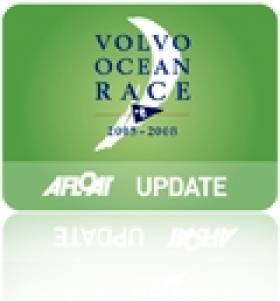Displaying items by tag: Volvo Ocean Wind
Team Vestas Wind's Nicholson Returns to the Scene of The Grind
#vor – Team Vestas Wind skipper Chris Nicholson (AUS) has flown back to a remote Indian Ocean reef to help oversee a complicated operation to retrieve his stranded boat after it was grounded there during Leg 2 of the Volvo Ocean Race nearly three weeks ago.
The 45-year-old flew in to Mauritius last night (December 17) to join the team's shore chief Neil Cox, a fellow Australian, who is leading the process.
Cox is one of the most experienced men in the business but the challenge to free the stricken Volvo Ocean 65 vessel from the grip of the reef in the Cargados Carajos Shoals (St Brandon), is a new one, even for him.
It has been there since the afternoon of November 29, when the boat ran on to the rocks at around 19 knots (35 kph), and forced Nicholson and the eight other men on board to abandon ship. The skipper eventually led his crew to safety.
"The ultimate plan, the gold-medal prize we're reaching for, is to get the boat buoyant enough to float across the lagoon to get it into more protected water," Cox told www.volvooceanrace.com.
"That would stop it disintegrating out on the reef, and, at the same time, once we get to the other side of the reef, gives us the chance to set it up in a controlled fashion to either be able to tow the boat back to Mauritius, or to use the derrick of the Maersk Line ship coming here on Monday to get it on board."
'Bizarre scenarios'
Cox, who has worked with Nicholson on two previous Volvo Ocean Race campaigns, added: "The race has taken me through some pretty bizarre scenarios, but I would say that this one is unique."
Nicholson and Cox set up the recovery operation in the Mauritian capital of Port Louis, liaising with local resources, chartering a boat they will use as a mother ship, getting all the necessary tools through customs and the permits to go back to the archipelago 430km away where the boat lies.
"We'll base ourselves on this mother ship, on the inside of the lagoon. It's on the leeward side of the reef and two and half miles away from the boat. The ship has the facilities for us to live onboard, because there is no way for us to stay on the island. We've also chartered local fishing boats to cross the lagoon everyday.
"It's a case of how structurally sound the boat is, and what we can utilise to get it buoyant again. And anything that floats, float tanks, buoyancy bags, you name it, is coming out with us."
He continued: "We want to bring as much of the boat back as possible. If anything can be recycled or used for a potential new boat, we have to do everything in our power to make that happen.
"The reality is, it's a very dangerous workplace we're going to. It doesn't have all the nice things we have in the stopovers. It's in the middle of the ocean. We're on our own. And, while I'd avoid the cheap shark headlines, yes, there is a lot more activity (of sharks) on the reef at nighttime."
Cox has seen much in his career but the saga still continues to astound him.
"Every now and then I feel like I'll wake up and it'll all just be a crazy dream, and I'd say, "wahoo, wasn't that the worst dream I've had in a long while?'"
























































